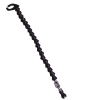Heron dipper-See EXAMINER Vertical Downhole Inspection Camera
The Heron dipper-See EXAMINER is a cost-effective vertical, downhole inspection camera that allows for well inspections and maintenance.
Features
- Ideal for viewing in wells, drains, vertical shafts, open bodies of water, etc. over 25mm (1”) in diameter
- Adjustable positioning arm offers ergonomic solution for viewing the HD screen at different angles
- Included accessories are easily transported in the provided wheeled carry case and accessory case
- Expedited repair and warranty service
- Lifetime technical support
- More
Overview
The Heron dipper-SEE is a cost-effective way for people to perform well inspections, maintenance, and installation quickly and accurately. The dipper-See EXAMINER comes with everything a well inspector, well driller, or hydrogeologist needs. Designed with portability in mind, this self-contained unit is ideal for viewing in wells, drains, vertical shafts, open bodies of water, boreholes and narrow tubes over 25mm (1”) in diameter.
Transportable
The dipper-See EXAMINER and the included accessories are easily transported in the super-tough wheeled carry case and accessory case.
Convenient Design
The adjustable positioning arm, conveniently attached to the frame, offers an ergonomic solution for adjusting the monitor for viewing the High Definition (HD) display screen at different angles and lighting conditions. The monitor conveniently houses all of the controls on the front of the panel. Record the video/audio on the SD card provided for easy video transfer to another device.
| Reel Assembly: | |
| Height | 36cm (14.2") |
| Depth | 21cm (8.3") |
| Width | 29cm (11.4") |
| Weight (Reel Assembly Only) | 2.30kg (5.1lbs) |
| Plate Material | Aluminum |
| Brake | Ergonomic Dial |
| Hanger | Included on frame leg |
| Tape Guide | Included on frame leg |
| Available Tape Lengths | 150m, 500ft |
| Cable: | |
| Tape | Polyethylene |
| Jacketing | Polyethylene |
| Conductors x 4 | 7 strand (4 S/S & 3 copper) |
| Markings every meter or foot | |
| Width | .952cm (3/8") |
| Break Strength | 127kg (280lbs) |
| Monitor/DVR: | |
| Resolution | 500TVL, 7.0" (diagonal) |
| Video Recording | HD Video |
| Display | Full Colour LCD |
| Operating Temperature Range | -20°C to 60°C (-4°F to 140°F) |
| DVR | External, Included (see manufacturer info for specs.) |
| SD Card | 32GB |
| Camera Probe: | |
| Weight | 315g +/- 5% |
| Length | 120mm (4.75") |
| Diameter | 25mm (1") |
| Operating Temperature Range | -10°C to 50°C (14°F to 122°F) |
| Removable | Yes |
| Depth Rating | IP68 to 300m (1000ft) |
| Wetted Material | Sapphire, Viton, Stainless Steel 316, Delrin, Acrylic, Polyethylene |
| Lens | Clear Sapphire |
| Battery: | |
| Rechargeable x 2 | 11.1v, Lithium Ion |
| Charger | Plug type A, AC Input |
| Included: | |
| Rugged Carry Case | Wheeled, Lightweight NK-7 Polypropylene |
| Weight: | |
| Unit | 9.1kg (20lbs) |
| Unit/Accessories/Cases | 21.8kg (48lbs) |
| Warranty: | |
| Unit - 1 year | |
| Case - NANUK Lifetime Warranty |
- dipper-See EXAMINER - with either 500 ft. or 150m tape
- DVR – records video and audio feed
- SD Card – removable for transferring video to computer or USB
- Charger - plug type A, AC Input, compact, portable
- Batteries (x2) - removable rechargeable lithium ion, up to 5 hours (3200mAh) per battery
- Microphone – 3.5mm jack, for video voice over
- Centralizer – centers and stabilizes camera probe, removable
- Retrieval Hook – for light weight items
- Monitor Visor – for glare free viewing
- Cleaning Cloth – for cleaning the lens and monitor
- Alconox (x2) – sample packs for cleaning the See-120 camera probe
- Super Tough, Wheeled Case – to protect your investment from the elements and transport
In The News
From Hurricanes to Florida’s Red Tides: Monitoring the Southwest Gulf Coast
Nearly every year, southwest Florida is blighted by harmful Karenia brevis blooms–known colloquially as Florida red tides. These harmful algal blooms (HABs) form over the West Florida shelf and are pushed shorewards by winds and currents. Once in touching distance of the coast, they often intensify, fed by land-based runoff, anthropogenic nutrients, and decomposing marine life killed by toxins produced by these red tides. Red tides have become more severe and persistent over the past 20 years, causing major environmental and economic damage.
Read MoreWave-Powered Buoy Deployed in Puget Sound
While the development of solar-powered monitoring systems has improved access to real-time environmental data, solar power is still limited by low light conditions, such as poor weather, nighttime, or high-latitude environments. To supplement these incumbent power solutions at sea, Ocean Motion Technologies has developed a small-scale ocean wave energy system that can be directly integrated with existing data buoy platforms. Not only does wave energy supplement solar power during periods when the buoys are limited by light availability, but it also allows data buoys to perform beyond their current power capacities.
Read MoreLong-Term Monitoring in the Chautauqua Lake Watershed
With a widely developed shoreline, Chautauqua Lake experiences influxes of non-point source pollution that have historically impacted the health of the lake. The Chautauqua Lake Association (CLA) has been monitoring the lake for over two decades, reporting on changes that have occurred over the years. A pair of local lake advocates, Jane and Doug Conroe, have lived on the lake for over 40 years and have played an important role in establishing monitoring programs and facilitating consistent data collection throughout the watershed. Doug has been involved with the Chautauqua Lake Association (CLA) since the pair moved to the area in 1980, and is currently serving as the Executive Director.
Read More











